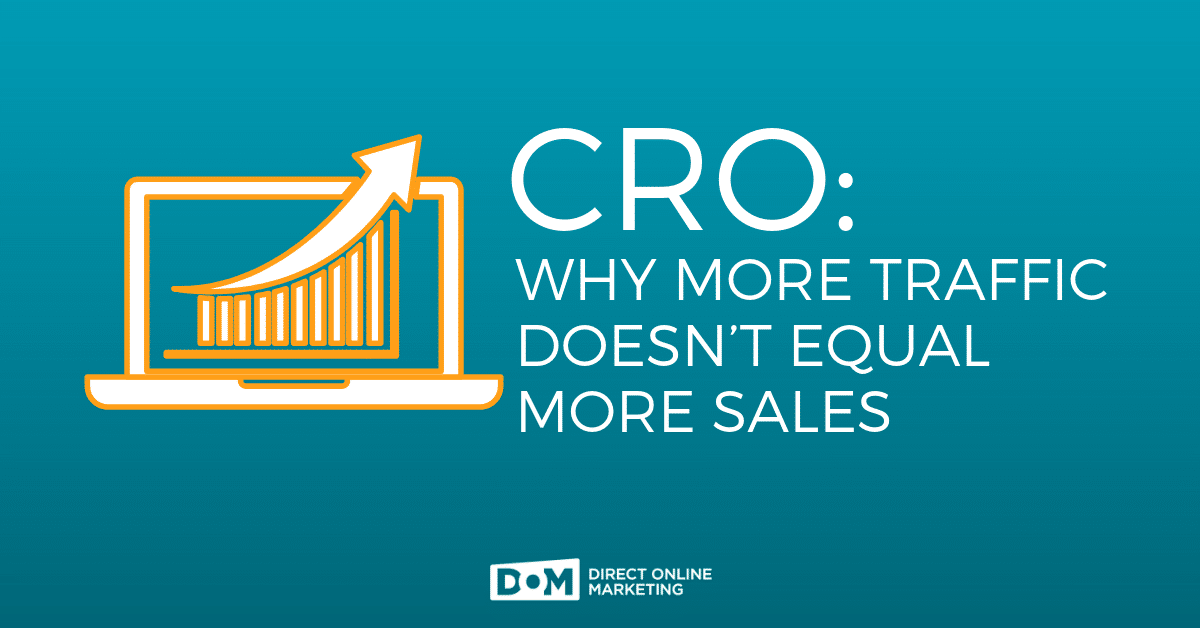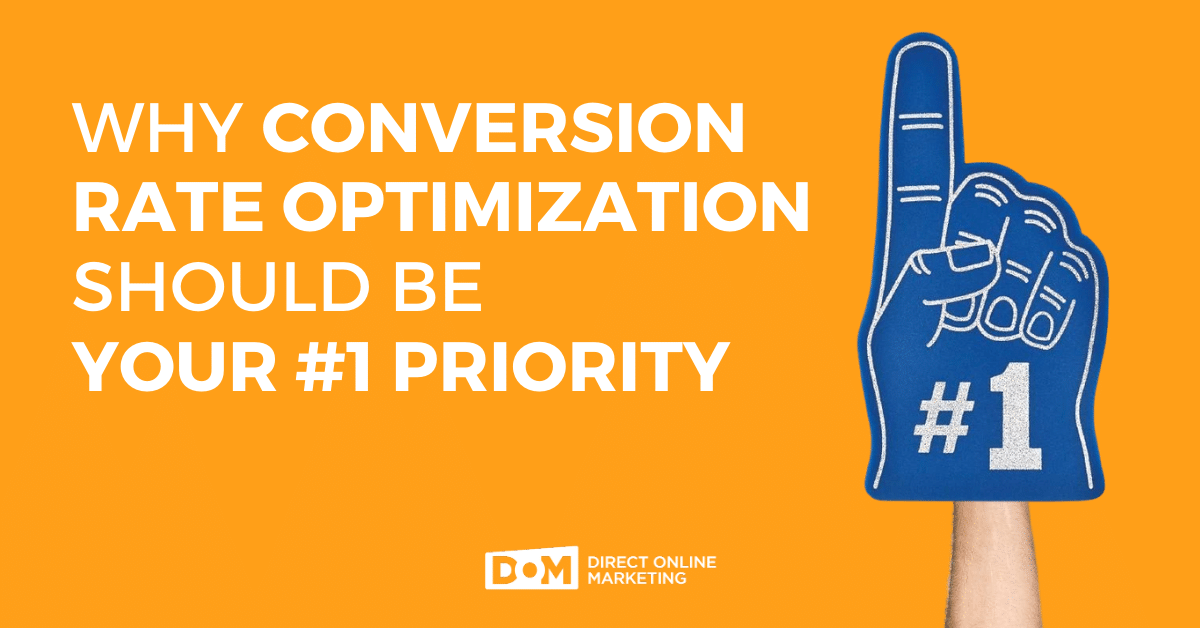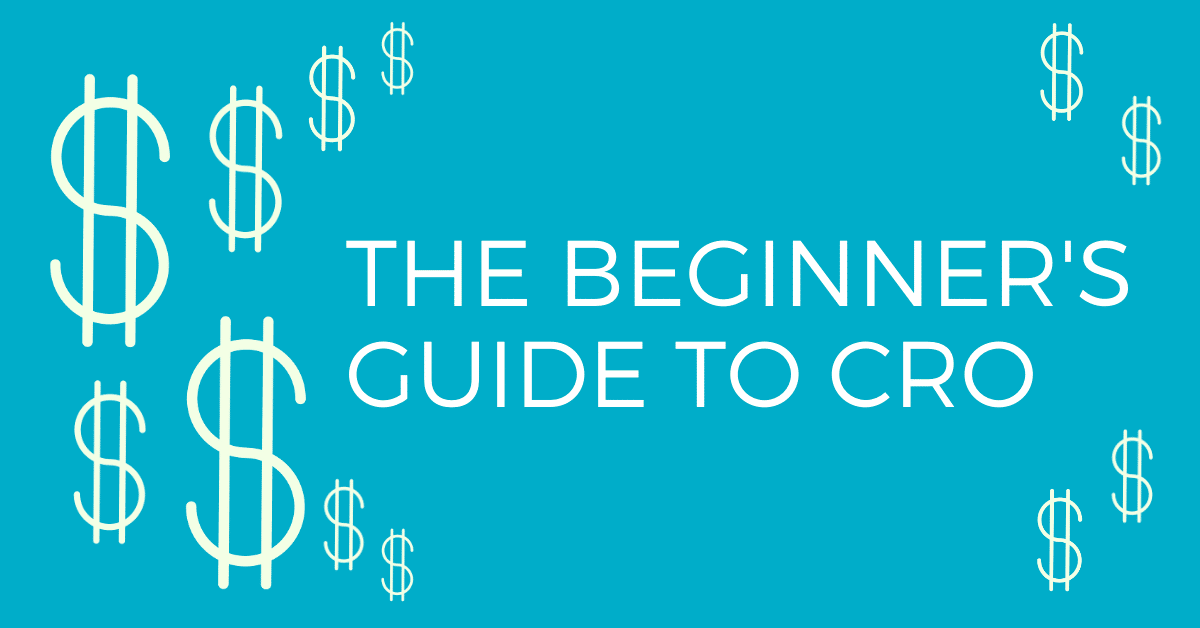
Sales are down. You’re feeling the pressure to get them up. Naturally, you surmise that you need to increase traffic.
Many marketers see improving traffic volume as the first step in improving ROI. The relationship between traffic and sales can feel directly correlated. With more eyeballs should come more sales, they say.
The problem is, “they” aren’t always right. Worse still, accepting such an approach as a mathematical certainty often leads to wasted efforts.
Why?
Because the driving factor in website sales remains conversion rate optimization. While traffic volume certainly plays a critical role in your website’s conversion rate optimization strategy, it often receives too much weight. Website owners labor over increasing the number of visitors to their site, rather than focusing on the quality of those users.
So let’s discuss some more potent conversion rate optimization factors. But first, let’s examine why trying to drive a lot of traffic could negate conversion rate optimization efforts.
The Downside of High-Volume Website Traffic
If you have the traffic, you probably feel you are in a position to make money. That’s typically true, but it is also important to understand that mo’ traffic equals mo’ problems, also.
- High-volume website traffic increases server costs
- Increased traffic may necessitate a content delivery network (CDN)
- Heavy website traffic can strain load times and cause high-converting users to back out
- High-volume website traffic limits landing page design opportunities
- High-volume website traffic also means more chances for hackers to harm your site, particularly with Distributed Denial-of-Service (DDoS) attacks
The Basic Flaw with High-Volume Traffic and Conversions
If high-volume traffic equated to increased sales directly, ad buyers would purchase advertising in volume. But they don’t; they filter traffic down to geos, gender, age, job title, and a slew of other demographics as a way to make money. Otherwise, they’d lose money on huge volumes of traffic hitting their landing page that doesn’t want to buy.
If you indiscriminately buy traffic, you’ll likely lose your ad spend. You must qualify your leads. Even if you happen to encounter large referral traffic volume, if you can’t cash in on the leads, you’ll eat away at your margins.
So what does all of this mean? This means that you should seek to improve lead quality rather than website traffic. It also means you should study conversion rate optimization until you can’t hold your eyes open. If your site is properly optimized for conversions and you focus on traffic quality, you’ll dramatically increase revenue.
How to Improve Conversion Rates
So now you’ve decided to focus less on increasing website traffic and more on improving conversions with the current traffic. That’s gold. But fear not, following this section, we’ll certainly tackle increasing the quality of inbound leads.
Make sure CTA is above the fold: Whatever product you’re selling, make sure the website visitor can see it. This CRO tip might change if we are talking about blog posts, where a CTA might be found towards the end. All the same, it is always a good idea to make sure landing pages host CTAs above the fold.
Make headlines succinct: Headlines should tell the visitor exactly what they are in for, clearly and precisely.
Leverage urgency: Timing is everything, particularly when time is running out. Visitors who feel that your offer is an urgent, time-restricted one may be more motivated to convert.
Create a value proposition: Do you have a value proposition? If not, you’re messaging to potential buyers probably reeks of inconsistency. Create a value proposition for website visitors. What value does the consumer receive in exchange for buying or signing up for your offer? Craft sales messages according to this. Test/optimize those value propositions.
Provide testimonials: People trust products with great reviews; they turn their noses up at those with none. Leverage a few notable happy consumer reviews on your landing page to help validate the quality of your offer.
Keep images on point: If you’re using the same old stock images as everyone else, you’ll seem inauthentic. Showing real people using your product, or real employees in your real offices creates trust between yourself and the website visitor.
Decrease form field requirements (beware, this can lower lead quality – see next section for details): More form fields mean more hurdles. Asking a website visitor to do too much can turn them off. You might get more leads using fewer forms.
Provide value: In the end, some visited your website looking for value. If they landed on a blog article, the value is found in your article’s guidance and solutions. If you offer poor content, why would anyone sign up for your newsletter or purchase a recommended product?
Match offers with content: Don’t just throw crap at a wall and hope something sticks. Create content that solves problems with your product/service solutions.
How to Increase Inbound Lead Quality
Notice, our subheader doesn’t read “how to increase traffic.” Instead, we want to focus on increasing the quality of inbound leads.
Filter all ad buys as much as possible: As stated prior, no competent ad buyer buys purely on volume. You must filter your traffic as precisely as you can. Otherwise, you’re wasting ad spend and server bandwidth.
Increase form field requirements: Remember in the prior section when I said you could increase conversions by lowering form field requirements? You can. But you can also harm lead quality when you use fewer form fields. Why? Because form fields help qualify traffic. For example, if you are an analytics service provider that needs to sign $20k-per-month contracts to stay solvent, then you would benefit from having a form field that asks “How large is your company?” with an annual revenue dropdown.
Stay SEO-keyword focused: Again, don’t throw crap at the wall with your SEO efforts. Use SEO software such as SEMRush to extract profitable keywords and build blog posts and landing pages around them.
More blogs, more traffic: Some may deem this hearsay, but the fact is, the more blog posts you create, the more traffic you’ll get.
Collect emails: Email marketing creates sales as well as any other medium out there. Add a newsletter signup form to your site and send out helpful content on a weekly basis.
Encourage content sharing: If someone enjoys your content and offers, they likely know other people who will share their sentiments. Make sure your content is shareable.
Retarget: The best inbound traffic you can receive is from those familiar with your brand. If someone’s already engaged with your content but failed to accept your offer, you want to make sure your offer finds them again. Facebook Ads, Bing Ads, and Google Ads all offer the ability to leverage pixels for this exact purpose. Retargeting increases traffic, but that traffic is highly qualified as a potential buyer.
If You Experience High Volume, Implement Conversion Rate Optimization on the Fly
You should always be optimizing your website for the sake of earning more revenue. But what happens if your blog article gets shared on a major Sub-Reddit, or by a huge website, and your traffic explodes?
Just because high-volume traffic doesn’t always equate to increased revenue doesn’t mean it never does.
You should look to optimize the landing page that’s experiencing the heavy traffic load. Here’re some CRO factors to consider:
Improve/Test CTAs. Your calls to action are vital for lead collection and sales. If a huge influx of traffic is coming in, you might be able to optimize the landing page that’s taking on the traffic. This can allow you to improve your chances of increased revenue.
Check page load times. You can check that specific page’s load times as well as your site load times using Google Page Speed Insights or GTmetrix. If the page experiencing high volume traffic becomes sluggish, expect people to back out of your page. If load times are getting out of control, try leveraging a CDN such as Cloudflare. They offer free plans that can bail your site out of load time catastrophe.
Conclusion
High traffic does not equate to increased revenue. Instead, focus on conversion rate optimization for your current traffic. As well, work on increasing quality inbound leads to your website. Doing so can help drive revenue.

